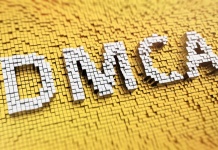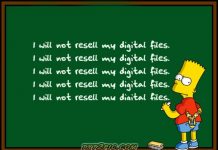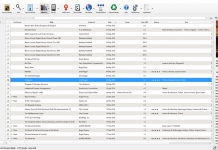 Everyone knows that POD means vanity press, right? Say that to any reputable indie publisher and you just might end up with a black eye.
Everyone knows that POD means vanity press, right? Say that to any reputable indie publisher and you just might end up with a black eye.
I’m holding a trade paperback POD in my right hand—well, I put it down to type, but I had it in my hand; and it looks to me indistinguishable from the offset printed book I had in my left hand except for the price, which is about a dollar higher. I’m sure that’s a red flag for some right there, but bear with me.
The same book, published electronically, sells for half the retail price online, a significant difference. That’s not always the case. Purchase an e-book copy of a hardback bestseller still on the NY Times list and you’re going to pay the same price.
The P/E price mystery
Why? Just why is an e-book the same price as a hardback? I was first annoyed and then amused when I read a comment posted to Engadget’s recent report about Amazon’s Kindle. The gist of it was:
When you buy a book at least 50% more like 90% of that cost is going to actually fabricating the physical book (UNLESS your making zillions of them then the numbers change big time) with an ebook 100% of that expense goes POOF yet they want to greedily keep all that money. [sic]
If that’s what everyone thinks, no wonder e-books aren’t burning up the market. No one likes to be ripped off.
I don’t know the numbers for offset printing, so I’m not going to go there, but let’s take a straightforward look at the POD I was just holding in my hand. It’s the upcoming Still Life with Devils by Deborah Grabien, and I admit I think it’s pretty good. I ought to since I’m publishing it. I’ll also admit that there’s a typo in the very last few pages. Sorry about that.
Behind a $15.95 book
The book’s retail price is $15.95. Of that amount we had printer set up fees, and some other associated costs, but the book itself cost almost $4.50 to print. That sounds like a pure profit of about $11.50, right? Except, of course, that it’s not. Because, in order to be stocked on bookstore shelves, we have to provide it to our distributor at a 55% discount of the cover price and, to be taken seriously as a publisher, we have to agree to take returns of any the bookstores can’t sell. We’ll get to returns in a moment.
So, the distributor pays about $7.00 per book and out of that we have to subtract the cost of printing, and we end up with $2.50 each. Out of that $2.50, we pay the author’s royalties, pay the printer’s set-up costs, pay for the ISBN (about $30.00 each, purchased in lots of 10 or more), cover the printing costs of any returns, pay the editors, artists, typesetters, pay for the shipping and printing of review and author copies, and pay the usual business expenses, like keeping our Internet access.
Remember that comment I mentioned? The commenter believes our printing and binding expenses leave us somewhere between $7.98 and $1.59 to pay for everything else. I guess he’s not far off.
Returns
Now seems a good idea to talk about returns. In the current system, if a bookstore orders 25 copies of our book and sells 10, we have to pay the printing costs of the other 15—which end up in the dumpster, the incinerator, or going home with an employee—a total of $67.50, plus shipping. That hurts, and if you magnify it to the grand scale of a major publisher it hurts a lot more, not just in dollars passed on to the consumers (painful enough alone) but in sheer waste of resources as well.
Is our commenter right about e-books, though? I am firmly of the belief that no e-book should cost the same as a hardback (then again I don’t believe a hardback should cost $30.00 either, but to net the same amount as our trade POD, we would have had to charge 24.95 for a hardback version), but neither do I believe that all the costs go “poof.”
Behind the E price
Let’s consider our example book’s incarnation as an e-book. Its cover price is $7.95. It’s already been edited and given cover art so that’s out of the way, but it still has to be formatted for all the different types of readers out there. We format for Microsoft Reader, Adobe, and Mobipocket. In addition, we offer HTML and plain text for the handhelds and readers that can’t manage one of those and we’re about to add on E-Reader for Palm.
Each of those formats requires a different software. Thankfully the Microsoft Reader and Mobipocket software is free, plain text is free, and HTML doesn’t cost anything unless you feel the need to buy a WYSIWYG editor. There are free PDF makers, but if you’re creating a print book you have to buy the real thing.
We sell the books on our Web site but that’s not really our focus. If that’s all we did most of the world would never know about them and we want to sell books, so we also send them to e-book distributors who require a percentage based on the cover price and often a set-up or listing fee. Some of them won’t accept books from small presses, but that’s another digression. (It might seem that I’m slamming distributors here, but I’m not. They have to pay their people, stay abreast of current technology, and make a reasonable profit as well. )
$3.60 net from E
So, of the $7.95 cover price for the e-book, after distribution we net about $3.60 per book. Out of that $3.60 per book we have to provide a different ISBN than the print book; pay the person with the time and skill to format the book in the various reader software; pay the listing and/or set-up fees; and we have to pay the author’s royalties. Thankfully we don’t have to worry about returns. Of course, we still have to keep our Internet access and upgrade our software.
All of this might seem like I’m painting a bleak picture, but I’m not. This is all good news and it could easily get better. If every publisher went to a POD/e-book model, the technology would follow and POD costs would come down. Books people wanted to read wouldn’t have to go out of print, which means that publishers wouldn’t have to guess whether or not a certain book would sell 500 copies or 50,000, thus they wouldn’t be required to come up with the initial outlay to pay for the printing of that 500 or 50k, and they wouldn’t have to arbitrarily limit sales to avoid losses. The returns system, an outdated system of ensuring books on the shelves, could be abolished or, at the very least managed better, so that returns didn’t kill publishers and disallowing returns wouldn’t kill bookstores.
E as a gap-filler
In addition, e-books could fill in some of the gap. Since there is a slightly (depending on the publisher) greater return on e-books, the costs of both could be cushioned by e-book sales. Finally, the production cost of e-books could be lowered if there were a standard format, and readers would be happier to have them if the DRM weren’t so entirely draconian. With all the different formats, and all the different styles of DRM, none of which make consumers entirely happy, someone’s going to end up with the e-book version of a lot of betamax video tapes. Or, as Bob Russell, an editor on MobileRead.com puts it:
What happens 10 years from now to my collection of Sony Connect books and eReader books, and Mobipocket books? They probably get thrown out like the hundreds of cassettes that I got rid of today. It makes you sick to think of the waste.
So for reading, I’ve come to the conclusion that DRM basically rules out e-books if you want to stay legal. That’s pretty sad. And I hate to say it because it’s sort of like the deep, dark ugly secret stink about e-books. I want e-book sellers to succeed wildly. I hate to tell the ugly secret out loud. But it’s real and it affect you the reader, and we need to acknowledge it.
He’s right. That’s why the books we sell on our Web site don’t include DRM, though that’s a problem for some authors and most software manufacturers. The authors want to be sure they’re getting their fair share of that $3.60 and the software companies want… what? All the pie? I don’t blame the authors, but stopping real, avid readers in an attempt to stop thieves isn’t the answer, and I do blame the software companies. It seems to me that settling on a standard format and a simple DRM system that allows readers to really own their e-books just isn’t that hard to do.
Maybe that commenter isn’t far wrong. Cory Doctorow says his income has risen since he started giving away electronic versions of his books.
I wonder if my authors would go for that…
Moderator’s note: Deena is publisher of a wonderful little house called Drollerie Press, and I hope that other publishers, big and small, will pay close attention to her words above. The TeleBlog, by the way, welcomes from-the-inside accounts from other publishers, large and small. No press releasy items! But essays like Deena’s we’ll cherish. Note: I’ve added the links in the first paragraph. – David Rothman


































“Out of that $3.60 per book we have to provide a different ISBN than the print book; pay the person with the time and skill to format the book in the various reader software;”
Call me obtuse, but if you’re not formatting into a parent format and *generating* the particular reader format, I think you deserve to lose the money. Format conversions are relatively easy, especially when given a well-documented starting markup.
Heck, I’m willing to bet your printer is only accepting electronic formats as well. That means you can transform to the printer format *from the same parent format as the e-books*.
Total cost after recouping software development: near $0. And development cost could be very low because this is a perfect project for cross-publisher collaboration on an open source solution, similar to how the banking industry handles financial middleware. Each publisher pays a fraction of the development cost but reaps the benefit of the complete solution.
Don’t rape me on cost just because you haven’t figured that out.
— C
Good blog post, Deena.
Print economics for small publishers is pretty grim. One of the reason there are as many small publishers as there are is because ePublishing allows us to make a few pennies when we sell books.
I think many not in the industry don’t realize how little the big publishers pay for printing (per book–they pay a lot overall, but spread that over many thousands of books). Their cost for a trade paperback, for example, is close to nothing and their cost for eBooks is close to nothing so why shouldn’t they price them the same. For small publishers, like Drollerie and BooksForABuck.com, our costs for paper are high–which is why we offer significant discounts for electronic copies.
I’ve mentioned this in previous posts so I’ll just recap. If you’re a big publisher, you live or die by distribution. If the big bookstores (Barnes and Noble, Borders, BooksAMillion) get pissed because you are undercutting them, they’ll buy fewer copies of your books and your revenue drops. They’re caught in the transition. A good reason to shop small publishers, no?
Rob Preece
Publisher, http://www.BooksForABuck.com
Another competitive advantage of small over big: small publishers pay for talent, big publishers pay for a track record.
Cerebus: bigger publishers can afford turnkey server-based publishing solutions with sophisticated workflows. Smaller publishers are still learning and improvising. It’s not merely a matter of providing a single sourcing solution; it’s a matter of having a solution which allows input from multiple workers and complex workflows. Still, it seems counterproductive to focus on PDF as an output format.
I have to wonder how much distribution really matters to ebooks in an age where any old Joe could put up a blog and a paypal link.
Heck, I’m willing to bet your printer is only accepting electronic formats as well. That means you can transform to the printer format *from the same parent format as the e-books*.
Cerberus, our printer requires a PDF, but formatted slightly differently than an e-book PDF. Mobipocket has proprietary code; Palm has proprietary code; Microsoft Reader has proprietary code. We start with the same basic file for each, but each has to be edited at least a little by hand. It’s not hard, but it does take time. Either way, I wouldn’t call $3.60 to pay everyone responsible for putting out a book “rape.” If you think it is, what do you call what the big printers are doing with their e-book pricing?
Rob, thanks. I’ve learned a lot from your comments on this blog and elsewhere.
I have to wonder how much distribution really matters to ebooks in an age where any old Joe could put up a blog and a paypal link.
Robert, it wouldn’t matter if you could be sure that a large enough number of people would find your blog and remember to stop back regularly. E-book readers know they can find a lot of great books at Fictionwise or Mobipocket from a variety of publishers, so for now, it matters.
“If you think it is, what do you call what the big printers are doing with their e-book pricing?”
Prison rape. 🙂
The only e-books I buy are non-DRM because I have too many different devices to support, and the majority of these are from Baen in MS LIT format–because I can explode those into OEBPS which FBreader likes. I tend not to deal with PDF ebooks because PDF rendering can be iffy on some platforms, and the lack of reflow is a complete pain on my N800.
Unfortunately, I don’t only want to read militaristic masturbation all the time (which limits Baen’s appeal; what happened to speculative fiction that was *more* than just a pissing contenst on who can describe the tissue rending properties of a high velocity round?) and Fictionwise’s non-DRM offerings are a little sparse and often even more expensive–Baen’s $6 is the upper bound for me.
— C
Prison rape.
Okay, that’s funny.
I have a Nokia 770, and I’m not entirely happy with any of the options available for it, but I haven’t explored FBreader beyond installing and opening a file in it as yet. Your upper limit is why you should come visit us. $7.95 is the highest price on our site. Of course, we’re just getting started, so that sparse offering you’ve mentioned goes doubly for us. Booksforabuck.com has been around much longer, though and has a much wider selection.
When I buy a DVD player, I look for functionality. How many types of files can this machine play?
I feel the same about ebook readers, which Is why I have yet to buy one. Unless ebook readers come out with the programming necessary to read as many formats as possible, I will continue to use a computer to read ebooks.
Making proprietary ebook formats with ebook readers designed only to read that type is stupid. The businessmen/women responsible for pushing single format readers are trying to corner a market when the market should not be cornered. The market needs to expand. If they let it expand, they’d have more sales right away, of both ebooks and hardware designed to read them.
[…] How print on demand and e-books with social DRM could revolutionize the publishing industry (tags: publishing ebooks books) […]